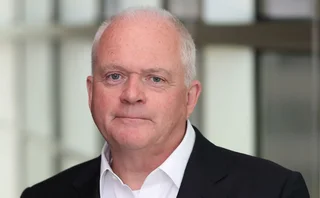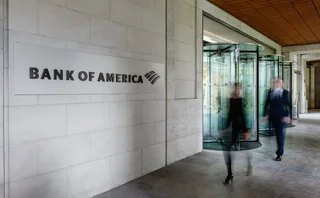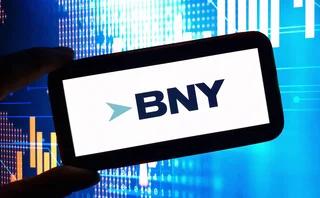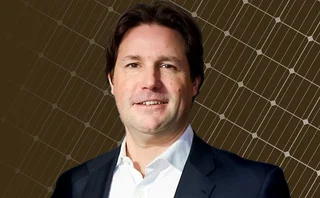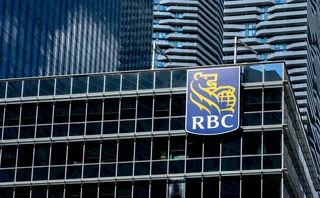
From politics to portfolios
While he has recently flirted with US politics, Blair Hull is most renowned for revolutionising trading. Now the markets beckon once more. By Navroz Patel

After a campaign tinged with controversy, there was really only one horse in the race for the US Senate in Illinois last November. Barack Obama emerged the winner in November, taking 70% of the vote, and was straightaway touted by the press as a future Democratic presidential candidate. Among the also-rans briefly mentioned in the myriad column inches devoted to Obama, a pioneer of electronic derivatives trading appeared: Blair Hull. Though he sunk nearly $29 million of his own money into the campaign, Hull is philosophical: “Barrack has emerged as a national leader. I believe he is going to be a great Senator,” he says.
With his political aspirations now on the back burner, Hull is refocusing his attention on the financial markets at his firm Matlock Capital, based in Chicago. Founded in 1999, it serves as a family office, managing the Hull family’s assets, and also has a trading arm. Hull spends his time trying to find a simple and elegant solution to a complex problem. “Many operations successfully trade different assets in separate portfolios. We want to be able to trade multiple assets, across markets, in a single portfolio,” he says. According to Hull, he has not been successful in achieving this goal, so far.
Much of Hull’s fortune was amassed after the sale of Hull Trading, the electronic derivatives trading firm he founded in 1985. He reputedly pocketed nearly $350 million when Goldman Sachs bought the firm for $531 million in 1999. In essence, Hull Trading’s approach was straightforward. It used computerised trading to profit from widespread short-term mispricing in the options and equity markets, while managing risk on a portfolio basis in real time. At the time of Goldman’s acquisition, Hull was widely regarded as among the most sophisticated market-makers on the Street, and was handling tens of thousands of transactions daily.
Hull’s talent for producing profits was evident, though in unconventional form, after he left graduate school in 1969. His first investment, of sorts, was a $500 stake he took to the blackjack tables of Nevada. In the early 1970s, he won enough from gambling to later put $25,000 to work on the floor of the Pacific Stock Exchange (PSE), where he would become an options market-maker. His biggest year of Blackjack winnings came in 1974. Casino owners are not known for their hospitality towards the kinds of successful, systematic gambling teams of which Hull was a part, and as they raked in the dollars, casinos began to close their doors to them.
In the interim, it was Hull’s search for an alternative way to make money that led him to the PSE, where he would work as a floor trader for three years. He subsequently spent eight years trading on the floor at the Chicago Board Options Exchange. In the late 1970s, he founded the firm that would become Hull Trading.
At the peak of his blackjack career, Hull was developing his own options pricing model, in complete ignorance of the groundbreaking Black-Scholes paper published in 1973. “My model converged with Black-Scholes. The only difference was that I used an empirical, rather than lognormal, distribution,” he says. Initially, Hull thought the profitability of the nascent options market wouldn’t last. Convinced by the potential applicability of computing to exchanges, Hull believed functions such as order entry and matching could, and would, become automated. He was right, though it was only in the early 1990s that electronic trading gained a real foothold.
“I have always leaned on technology to give me an edge,” he says. Perhaps Hull’s biggest contribution to trading was his role in fighting to get computers on to the trading floor. He views this as an essential step in the broadening of market access. “Traders were even reluctant to let colleagues from another pit trade their part of the floor, such was their time and place advantage,” he says, adding that whether talking about financial markets or healthcare, he will always fight for equal access.
Today, Hull is pragmatic about regaining the intellectual and technological edge he once had over his peers. “It’s difficult to get back into the business after five years out. The markets have changed tremendously – you can’t just jump straight in,” he says. In the late 1980s and early 1990s, Hull was one of the financial firms that broke the mould through its model-driven approach, and hiring of PhD mathematicians and physicists. Nowadays, these characteristics are commonplace. “The complexity of markets, trading and technology is now 100 times what it was in 1990,” he says. Then again, Hull Trading was able to achieve a level of sophistication in the late 1990s that some market-makers have only recently matched. The odds are it won’t take Hull too long to get up to speed.
Only users who have a paid subscription or are part of a corporate subscription are able to print or copy content.
To access these options, along with all other subscription benefits, please contact info@risk.net or view our subscription options here: http://subscriptions.risk.net/subscribe
You are currently unable to print this content. Please contact info@risk.net to find out more.
You are currently unable to copy this content. Please contact info@risk.net to find out more.
Copyright Infopro Digital Limited. All rights reserved.
As outlined in our terms and conditions, https://www.infopro-digital.com/terms-and-conditions/subscriptions/ (point 2.4), printing is limited to a single copy.
If you would like to purchase additional rights please email info@risk.net
Copyright Infopro Digital Limited. All rights reserved.
You may share this content using our article tools. As outlined in our terms and conditions, https://www.infopro-digital.com/terms-and-conditions/subscriptions/ (clause 2.4), an Authorised User may only make one copy of the materials for their own personal use. You must also comply with the restrictions in clause 2.5.
If you would like to purchase additional rights please email info@risk.net
More on People
Fishwick hands over BlackRock CRO role, Citi expands Asia FX team, and more
Latest job changes across the industry
Nomura shuffles risk methodology team
Epperlein takes advisory role six months after Japanese bank’s FRTB IMA go-live
Andy Ross leaves StanChart
CurveGlobal veteran confirms his departure as bank’s global head of prime brokerage
People moves: BofA’s new markets heads, Barclays takes SG’s Mastrangelo, and more
Latest job changes across the industry
People: BNY taps Nasdaq CRO for enterprise risk role, Hoornweg steers StanChart CIB solo, and more
Latest job changes across the industry
People: Nomura’s rates rebuild continues, DB USA’s new CEO, and more
Latest job changes across the industry
JP Morgan’s credit structuring head departs
Denis Gardrat will head infrastructure investor Rivage Investment’s UK unit
UBS sterling rates head joins RBC Capital Markets
Ian Hale joins the Canadian bank as head of European inflation trading
